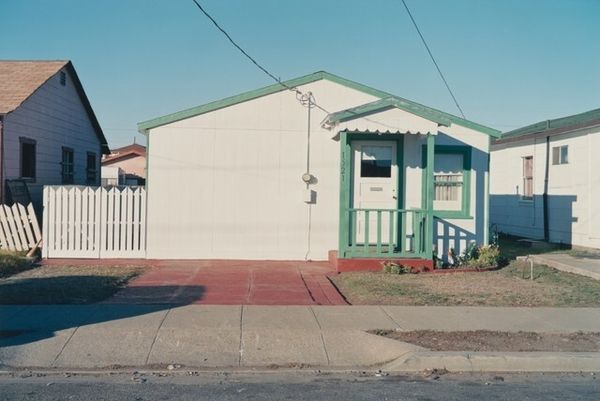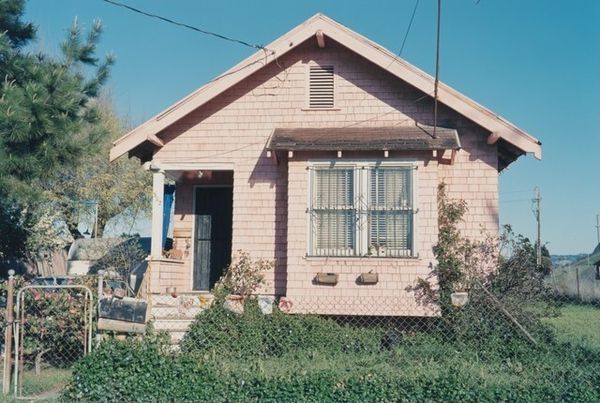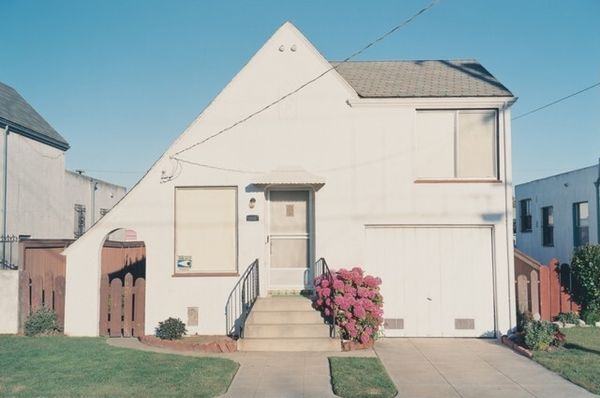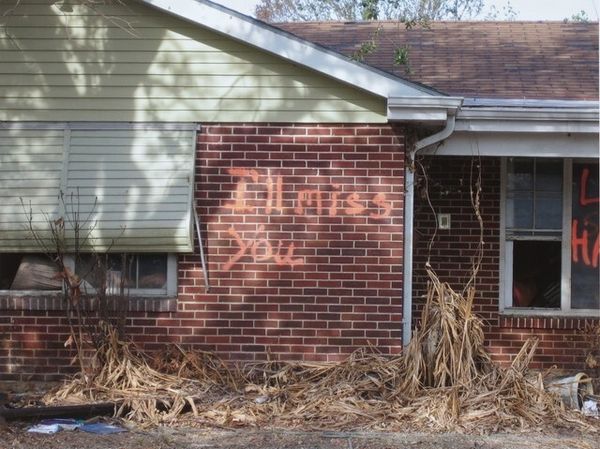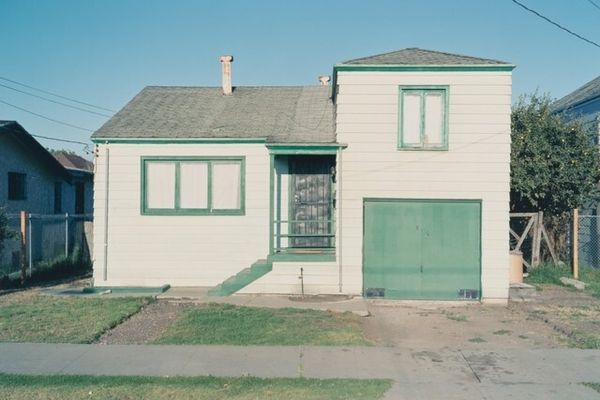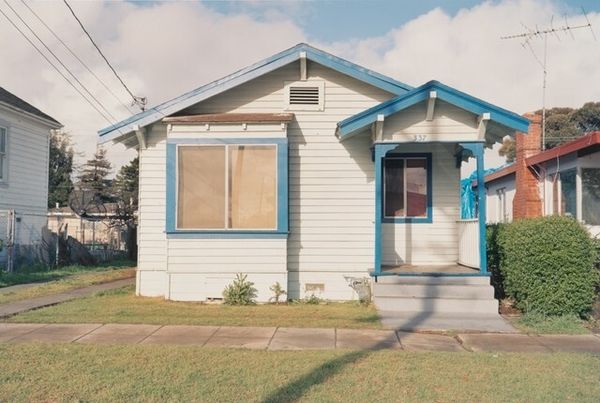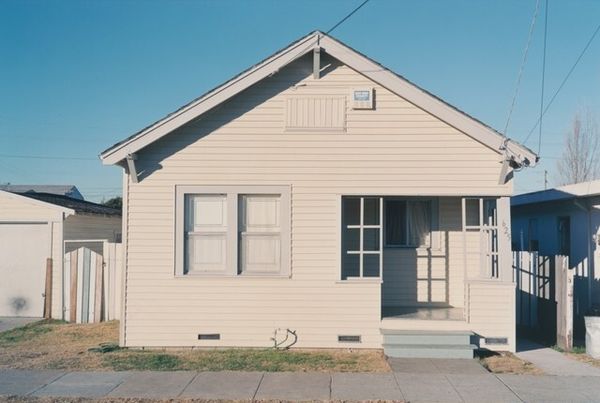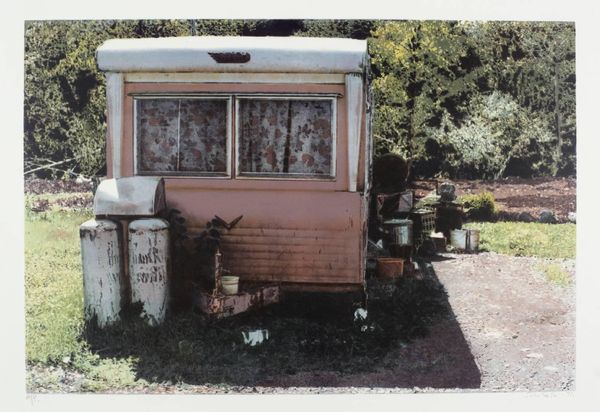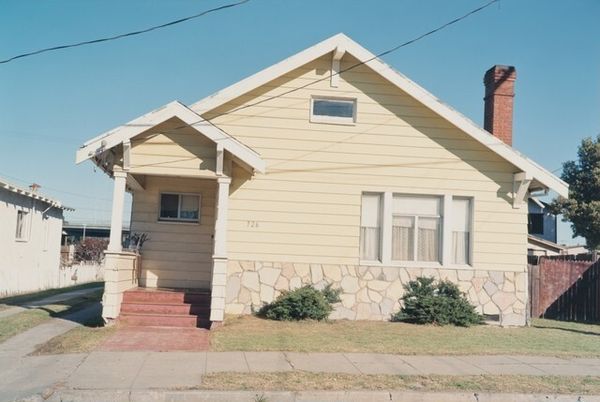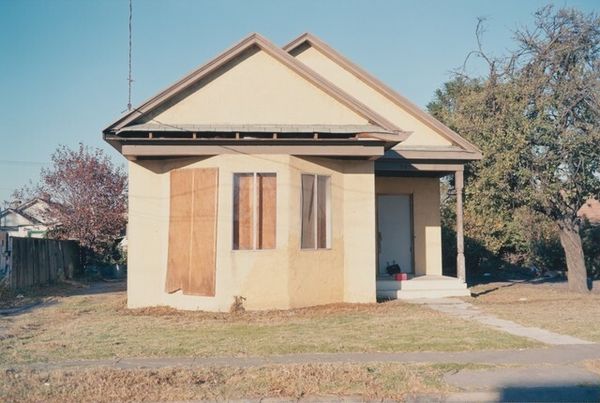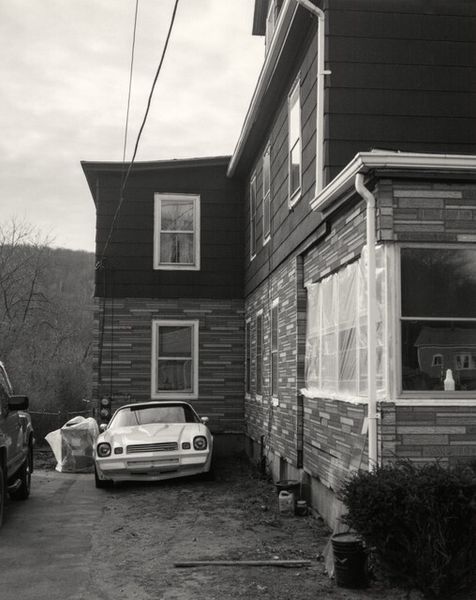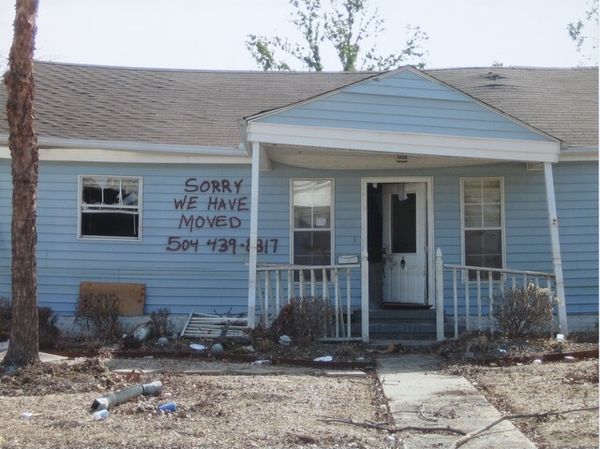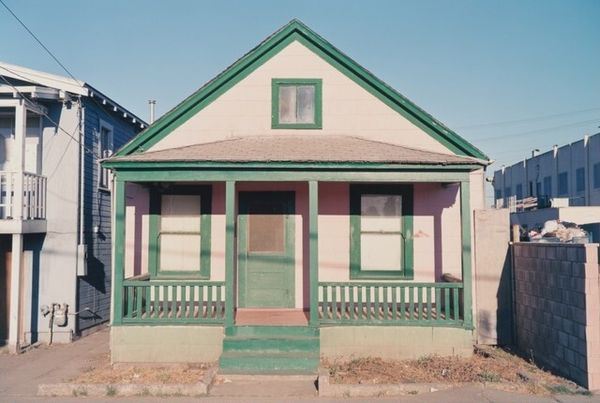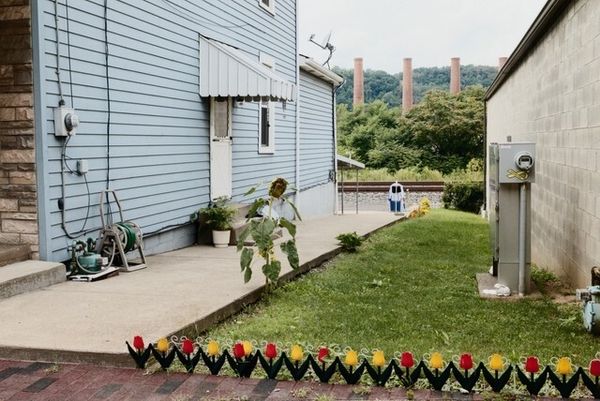
photography, site-specific
#
street view
#
street art
#
landscape
#
street-photography
#
photography
#
paste-up
#
earthy tone
#
urban art
#
site-specific
#
realism
Dimensions: image: 24 × 32.5 cm (9 7/16 × 12 13/16 in.) sheet: 27.8 × 35.3 cm (10 15/16 × 13 7/8 in.)
Copyright: National Gallery of Art: CC0 1.0
Curator: This is "Domeij," a 2015 photograph by Inbal Abergil. It looks like a very candid, perhaps even mundane, street photograph. What do you make of it? Editor: Mundane is definitely the first word that comes to mind. It feels… accidental. Like a snapshot someone took while walking down the street. The palette is muted, dominated by whites and faded browns, with only a few splashes of color. Curator: Accidental perhaps in its appearance, but consider its symbolic layering. Look at the patriotic iconography – the star, the American flag on the mailbox. How does it contribute to the cultural narrative Abergil is crafting? Editor: It suggests a certain… typicality. Almost a visual shorthand for "American home." These symbols carry so much weight, especially in a post 9/11 context. The gold star, which also resonates with a symbol for fallen heroes, hints to a past of sacrifice or military service and connects to shared experiences in our history. Curator: And that's contrasted with the everyday—the sink discarded on the lawn. It's a jarring juxtaposition, wouldn't you agree? The functionality of the sink, set on a pile of brown leaves, stands out. It feels out of place as the patriotic images convey a more profound message about national pride. Editor: Precisely! That sink disrupts the "perfect American home" ideal. It introduces an element of lived reality – imperfection, decay, even a touch of neglect. Are we meant to consider how this "ideal" stands against more practical and environmental issues? It's as though Abergil challenges the narratives embedded in our culture, using these visual symbols to start that dialogue. Curator: You bring up an interesting point about the environment. This all feels strangely familiar in its ordinary quality; it could be a document of how contemporary humans occupy or exist in space. Editor: That's exactly where I see Abergil's contribution. She uses a deceptively simple image to ask much larger questions about the stories we tell ourselves as a culture, and how those stories play out in the very spaces we inhabit. I see visual inquiry to explore collective identity in the making. Curator: It leaves me pondering how these elements become, over time, deeply interwoven. The home, the sink, and what these tell us about community values and material practices. It is indeed layered in a visually profound way.
Comments
No comments
Be the first to comment and join the conversation on the ultimate creative platform.
